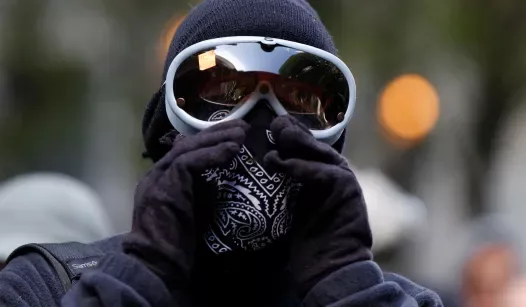Law enforcement agencies in the United States have a range of tools at their disposal to address violence and unrest, including actions attributed to groups like Antifa. While discussions around designating Antifa as a domestic terrorist organization have gained traction, it is crucial to recognize that law enforcement can effectively respond to violent actions without such a label.
The first step in addressing any group engaged in violent behavior is understanding the legal framework that allows law enforcement to act. Current laws provide authorities with the ability to investigate and prosecute individuals who engage in violence, regardless of their affiliations. This means that officers can focus on the actions of individuals rather than the ideologies of the groups they may belong to.
One of the primary tools available to law enforcement is the ability to charge individuals with crimes such as assault, vandalism, or inciting violence. These charges can be applied based on the actions taken during protests or demonstrations, regardless of whether the individuals identify as part of Antifa or any other group. This approach emphasizes accountability for actions rather than targeting a specific ideology.
Additionally, law enforcement can utilize intelligence gathering and community policing strategies to monitor and respond to potential threats. By fostering relationships with local communities, police can gain valuable insights into the intentions and activities of various groups. This proactive approach allows for early intervention before situations escalate into violence.
Another critical aspect of addressing violent behavior is collaboration between different law enforcement agencies. By sharing intelligence and resources, local, state, and federal agencies can create a more comprehensive response to potential threats. This cooperation enables law enforcement to address violence more effectively, regardless of the group involved.
Furthermore, the judicial system plays a vital role in ensuring that individuals who engage in violent actions are held accountable. Courts can impose strict penalties on those found guilty of violent crimes, sending a clear message that such behavior will not be tolerated. This legal framework provides a deterrent effect, discouraging individuals from engaging in violent protests or riots.
It is also essential to consider the role of public discourse in shaping perceptions of groups like Antifa. While media coverage often highlights the most extreme actions, it is important to remember that the vast majority of individuals who may identify with a particular ideology do not engage in violence. By focusing on individual actions rather than broad generalizations, we can foster a more nuanced understanding of the issues at hand.
In summary, law enforcement already possesses the necessary tools to address violent behavior associated with groups like Antifa. By focusing on individual actions, fostering community relationships, and collaborating across agencies, authorities can effectively respond to violence without the need for designating specific groups. This approach not only upholds the rule of law but also ensures that accountability is maintained, ultimately contributing to safer communities.
